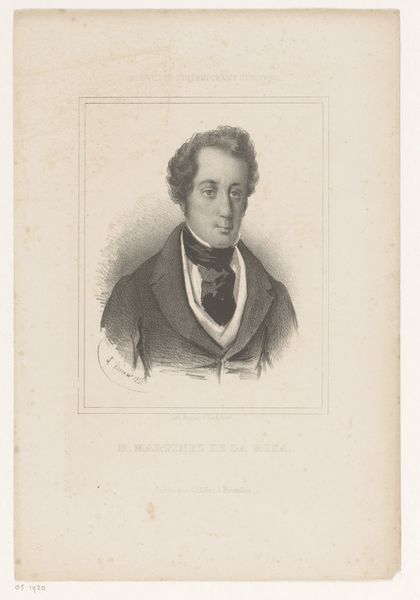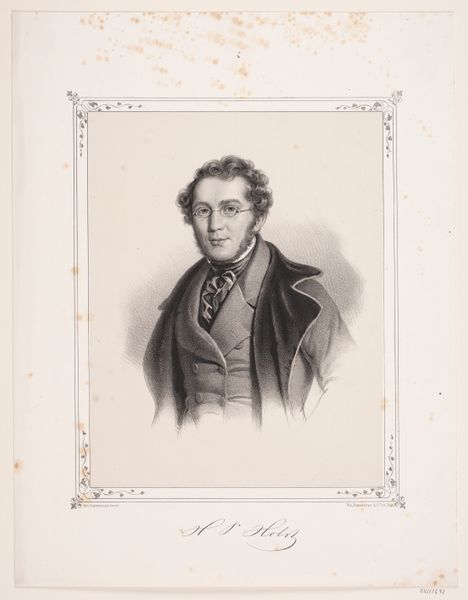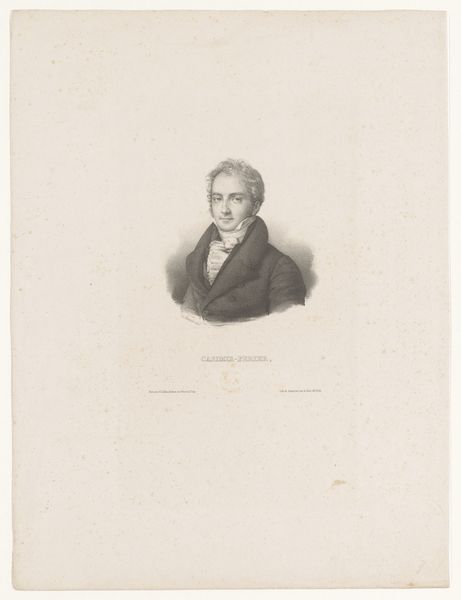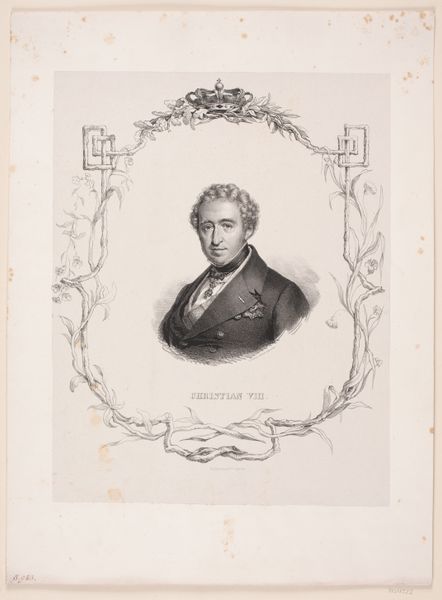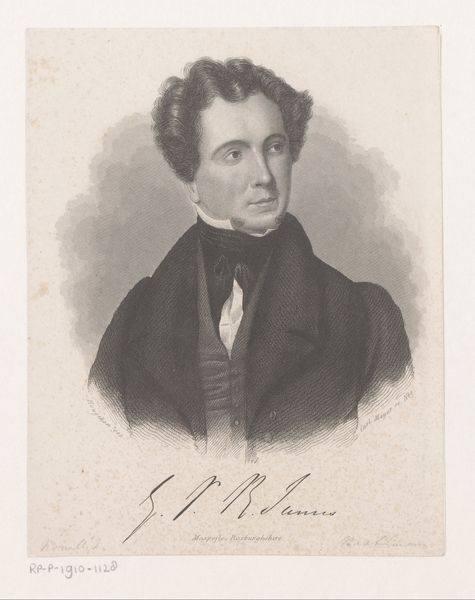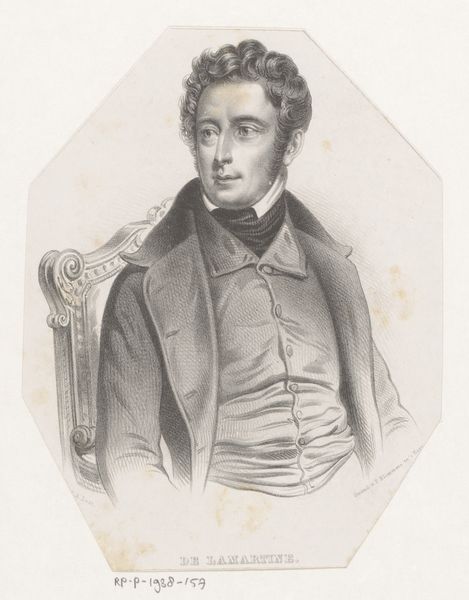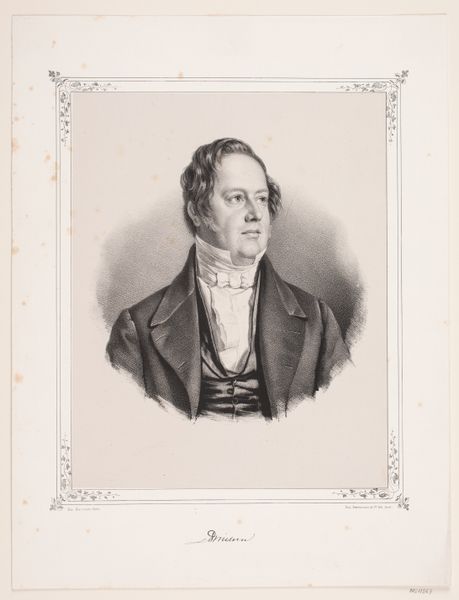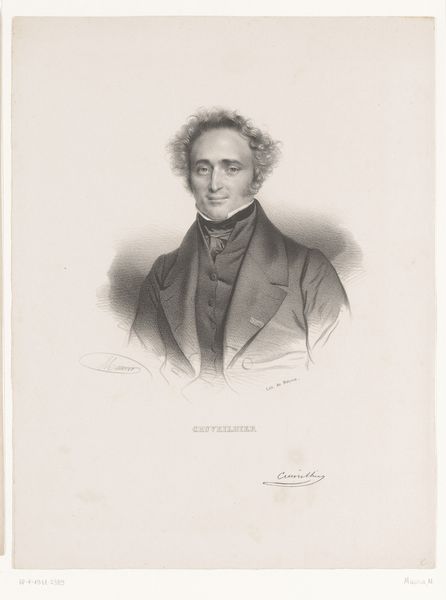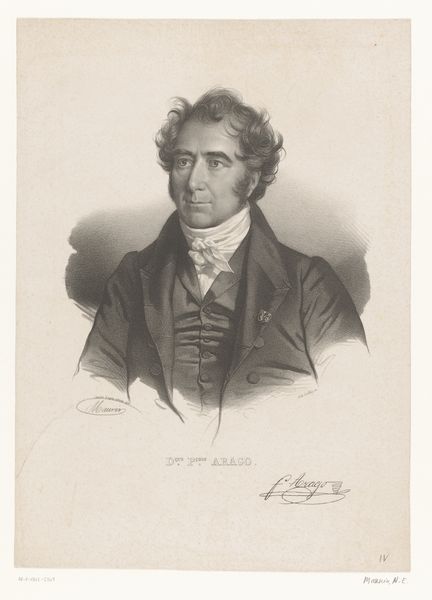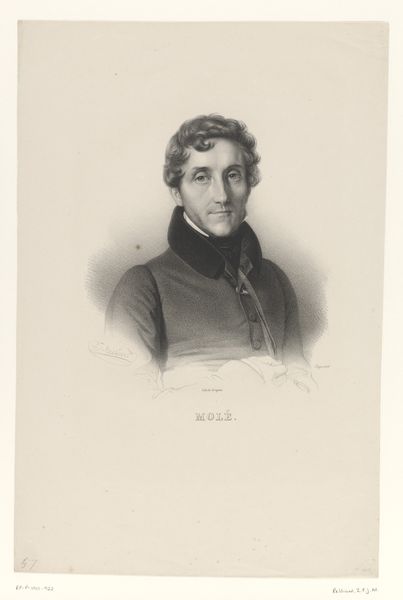
print, engraving
#
portrait
# print
#
romanticism
#
engraving
#
realism
Dimensions: height 365 mm, width 270 mm
Copyright: Rijks Museum: Open Domain
Curator: Let's turn our attention to this portrait of Alphonse de Lamartine, dating from 1839 to 1841. It’s rendered as a print, specifically an engraving, by J. Koole. Editor: Immediately, the frame pulls me in. Those ornate flourishes around the portrait create such a formal, almost theatrical mood. And the ship near the top, is that hinting at Lamartine’s journey? Curator: It's intriguing how the engraving medium impacts our understanding. The artist chose this process of incising an image onto a plate, likely copper, which speaks volumes about reproducibility and dissemination in this era. These prints were how many people encountered images of public figures. Editor: Exactly! Lamartine was a prominent figure, both a poet and politician. That ship, a recurring motif in Romantic art, likely symbolizes journeys—not just physical ones, but intellectual and spiritual voyages too. It elevates his status, tying him to larger themes of exploration and progress. Curator: Note the cross-hatching. Look at how those delicate lines coalesce to form the tonal variations, the shading on his face, the texture of his coat. It’s a very labour-intensive process to convey the detail necessary to mimic paint. Editor: Yes, and think about the weight that Alphonse de Lamartine would hold as a public figure at that time, reproduced to become ubiquitous. The artist’s choice of engraving could very well be to emphasize the values and imagery of Romanticism. Curator: Furthermore, the Romantic era valued emotion, but through a lens of realism and the materials are humble. I wonder about the social connotations too - a portrait, but through printed form, not limited to the wealthy, aristocratic classes like paintings were, allowing images like this to reach much more diverse strata of society. Editor: Perhaps. But the image of a ship would've carried cultural baggage even then—adventure, exploration, even escape. Lamartine may have simply chosen familiar symbols of his class and of nationalistic ambitions to connect to an audience ready to accept him as such. The symbols speak to a collective identity of possibility. Curator: It is fascinating to me, the accessibility of prints during a period of emerging democratic ideals in contrast to traditional commissioned portraiture. Thank you. Editor: Indeed, pondering its symbols in a romantic style really underscores that point. Thanks!
Comments
No comments
Be the first to comment and join the conversation on the ultimate creative platform.
